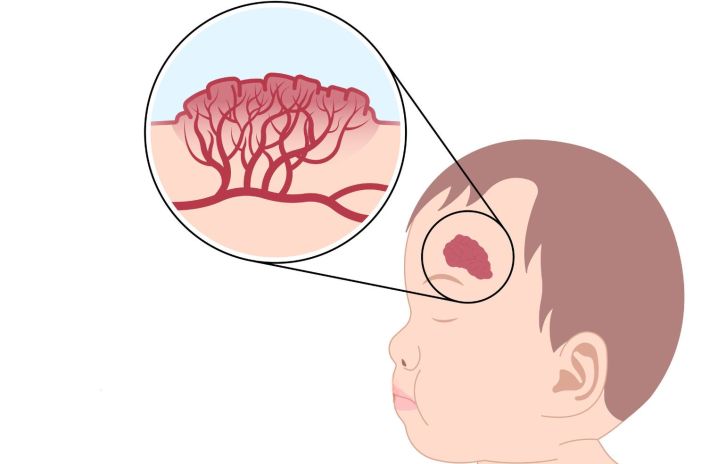
Vascular malformations--also known as birthmarks--occur when blood vessels develop abnormally. At Gillette Children's, our internationally recognized experts strive to treat these malformations as early in a child's life as possible. Combining the skills of experts in craniofacial and plastic surgery, psychology, radiology and imaging, and social work, Gillette Children's specialists work as a team to ensure the best patient outcomes in vascular malformation treatment. To refer a patient to Gillette's team of expert providers, call (651) 325-2200.
All non-problematic vascular malformations should be observed for changes or fading over time. The four primary types of vascular malformations are:
Capillary Malformation
Port Wine Stains
- Slow flow; pink or purple with well-defined borders; blanchable
- Most common on the face
- Hyperpigmentation and thickening increase with age
- Associated with Sturge-Weber syndrome
Nevus Simplex
- Also known as "stork bite, "angel kiss," or "salmon patch"
- Most common on the nape, glabella, and eyelids
- Borders are poorly defined
- Typically fades with time
Both subtypes of capillary malformation are present at birth. Treatment options for capillary malformations include concealment with makeup and/or V-beam pulse laser dye treatment. Laser treatment typically requires multiple sessions; its function is to reduce the pigmentation level of the capillary malformation. Experts recommend that capillary malformations are treated before a child reaches the age of self-awareness or strong memory formation.
Venous Malformation
- Slow flow; blue or purple; blanchable
- Most common on jaw, cheek, tongue, and lips
- May be painful
- Swells in a dependent position or if the child cries, bears down, has a fever, or is in a warm environment
- Shrinks in a cold environment
Treatment options for venous malformations include percutaneous sclerotherapy. Excision (though complete removal of the lesion is rare) and compression are other treatment options to consider with more problematic or painful venous malformations.
Lymphatic Malformation
- Slow flow; results from excess fluid accumulation in the lymphatic system
- Most common on the head and neck
- May spontaneously involute (depending on size)
- Prone to infection
- Associated with Klippel-Trenaunay syndrome
Sclerotherapy should be used to treat macrocystic or otherwise problematic lymphatic malformations. Sclerotherapy is less risky and more effective than surgical excision, which carries an increased risk of intralesional bleeding and infection and should only be used when sclerotherapy is not possible. Compression garments are another helpful option for the treatment of lymphatic malformations.
Arteriovenous Malformation
- High-flow, pulsating collection of blood vessels
- Abnormal connection between arteries and veins; can be disfiguring
- Can cause pain, bleeding, ulceration
- Usually appears in late childhood or adolescence
Arteriovenous malformations are rarely cured, with the goal of treatment being successful management. Sclerotherapy is one treatment option, as is embolization followed by resection.



